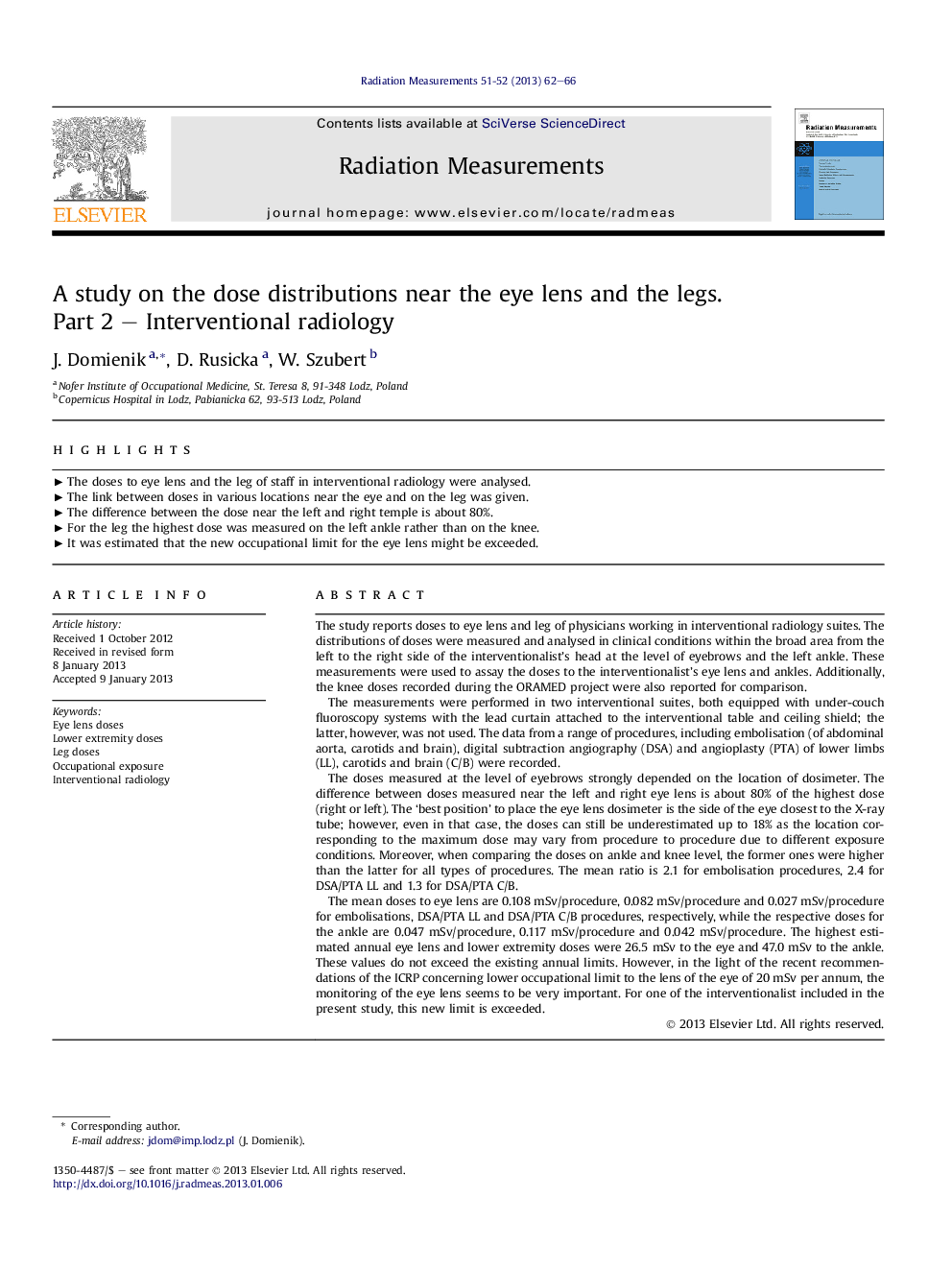| کد مقاله | کد نشریه | سال انتشار | مقاله انگلیسی | نسخه تمام متن |
|---|---|---|---|---|
| 1881449 | 1533437 | 2013 | 5 صفحه PDF | دانلود رایگان |

The study reports doses to eye lens and leg of physicians working in interventional radiology suites. The distributions of doses were measured and analysed in clinical conditions within the broad area from the left to the right side of the interventionalist's head at the level of eyebrows and the left ankle. These measurements were used to assay the doses to the interventionalist's eye lens and ankles. Additionally, the knee doses recorded during the ORAMED project were also reported for comparison.The measurements were performed in two interventional suites, both equipped with under-couch fluoroscopy systems with the lead curtain attached to the interventional table and ceiling shield; the latter, however, was not used. The data from a range of procedures, including embolisation (of abdominal aorta, carotids and brain), digital subtraction angiography (DSA) and angioplasty (PTA) of lower limbs (LL), carotids and brain (C/B) were recorded.The doses measured at the level of eyebrows strongly depended on the location of dosimeter. The difference between doses measured near the left and right eye lens is about 80% of the highest dose (right or left). The ‘best position’ to place the eye lens dosimeter is the side of the eye closest to the X-ray tube; however, even in that case, the doses can still be underestimated up to 18% as the location corresponding to the maximum dose may vary from procedure to procedure due to different exposure conditions. Moreover, when comparing the doses on ankle and knee level, the former ones were higher than the latter for all types of procedures. The mean ratio is 2.1 for embolisation procedures, 2.4 for DSA/PTA LL and 1.3 for DSA/PTA C/B.The mean doses to eye lens are 0.108 mSv/procedure, 0.082 mSv/procedure and 0.027 mSv/procedure for embolisations, DSA/PTA LL and DSA/PTA C/B procedures, respectively, while the respective doses for the ankle are 0.047 mSv/procedure, 0.117 mSv/procedure and 0.042 mSv/procedure. The highest estimated annual eye lens and lower extremity doses were 26.5 mSv to the eye and 47.0 mSv to the ankle. These values do not exceed the existing annual limits. However, in the light of the recent recommendations of the ICRP concerning lower occupational limit to the lens of the eye of 20 mSv per annum, the monitoring of the eye lens seems to be very important. For one of the interventionalist included in the present study, this new limit is exceeded.
► The doses to eye lens and the leg of staff in interventional radiology were analysed.
► The link between doses in various locations near the eye and on the leg was given.
► The difference between the dose near the left and right temple is about 80%.
► For the leg the highest dose was measured on the left ankle rather than on the knee.
► It was estimated that the new occupational limit for the eye lens might be exceeded.
Journal: Radiation Measurements - Volumes 51–52, April–May 2013, Pages 62–66